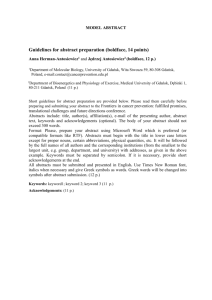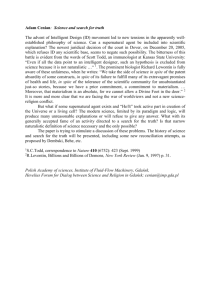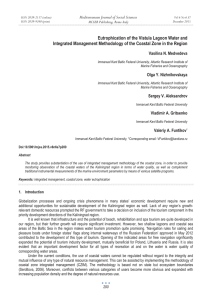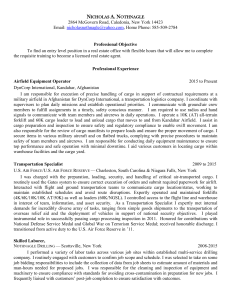Shipping on the Vistula River The river Vistula was used by various
advertisement
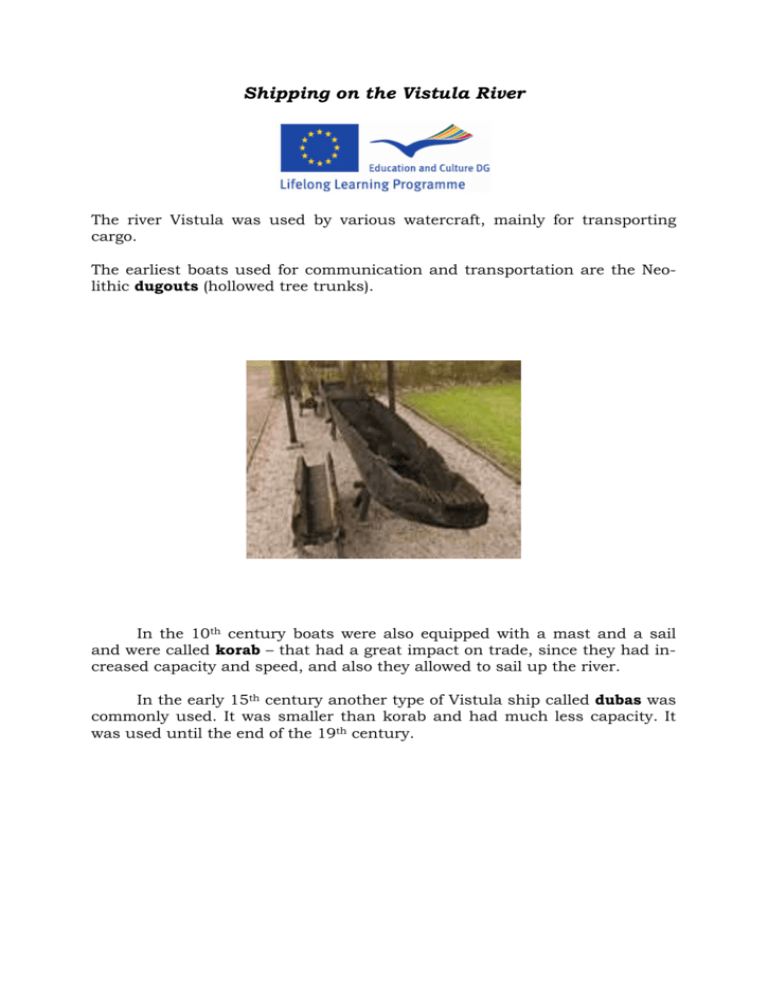
Shipping on the Vistula River The river Vistula was used by various watercraft, mainly for transporting cargo. The earliest boats used for communication and transportation are the Neolithic dugouts (hollowed tree trunks). In the 10th century boats were also equipped with a mast and a sail and were called korab – that had a great impact on trade, since they had increased capacity and speed, and also they allowed to sail up the river. In the early 15th century another type of Vistula ship called dubas was commonly used. It was smaller than korab and had much less capacity. It was used until the end of the 19th century. In 16th century on the Vistula appeared a big cargo ship having a mast, sail and also rows – szkuta. A big rowing boat without sails was called galar. It was used for transporting goods on the Vistula on short distances and for reloading goods. Another big sailless rowing boat was komiega. What is unique about this boat is that it was used only once – after delivering its cargo to the seaports, it was sold – i.e. to be used as fuel. In the 19th century berlinka was most commonly used – a sailing ship with a deck. In the second part of the 19th century on the Vistula appeared steamships – first the paddle steamers, later – turbine steamers. In the beginning of the 20th century motorships were introduced. Rafts were used since ancient times until the thirties of the 20 th century for transportation of some kinds of goods. Rafts were built from tree trunks tied together – after disassembling in Gdańsk the wood was sold. According to the water transport fee register dating back to the 15 th century, Vistula was used to transport to the port of Gdańsk mostly grain (1/3 of the whole transport), but also wood, ash, wax, honey, spices, metals, fur, craftwork etc. Up the river, to the south of our country, the following cargo was transported: fish, meat, metals, fur, skins, materials, wool. Each city lying by the Vistula had its own sailing code and charged fees (=took money) for goods transported through that city. Only the nobility (dukes, lords, earls etc.) did not have to pay fees. Not all goods were shipped to Gdańsk, some were sold on the way. These cities had harbours and facilities for travellers. The importance of Vistula shipping increased in 16 th century. Two Polish Baltic ports, Gdańsk and Elblag, received goods through the Vistula. These goods were sent through the Baltic Sea to England, the Netherlands and other countries. Gdańsk exported 82% of goods that came to its port on the Vistula from all Poland. The Vistula was a communication path of Poland, used mainly for shipping cargo rather than travelling. Passengers were usually placed on freight ships, so the travel wasn’t comfortable. But in summer it was still more comfortable than to travel by road. Polish sovereigns (=kings) obviously did not travel on freight ships. They had their own complex flotilla, that was used often and willingly. Travelling traffic on Vistula developed in 19th century. In 20th century it became mainly tourist traffic. Cruises, lasting one or several days, were organised on this picturesque river, called the Queen of Polish Rivers. This project has been funded with support from the European Commission. This publication reflects the views only of the author, and the Commission cannot be held responsible for any use which may be made of the information contained therein.

